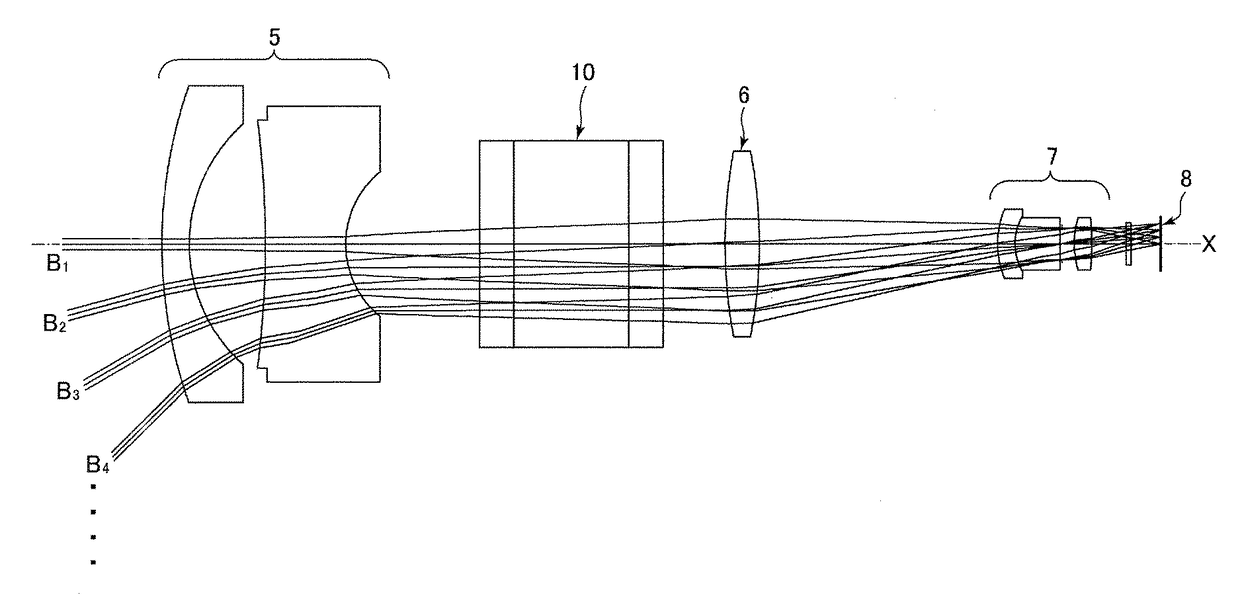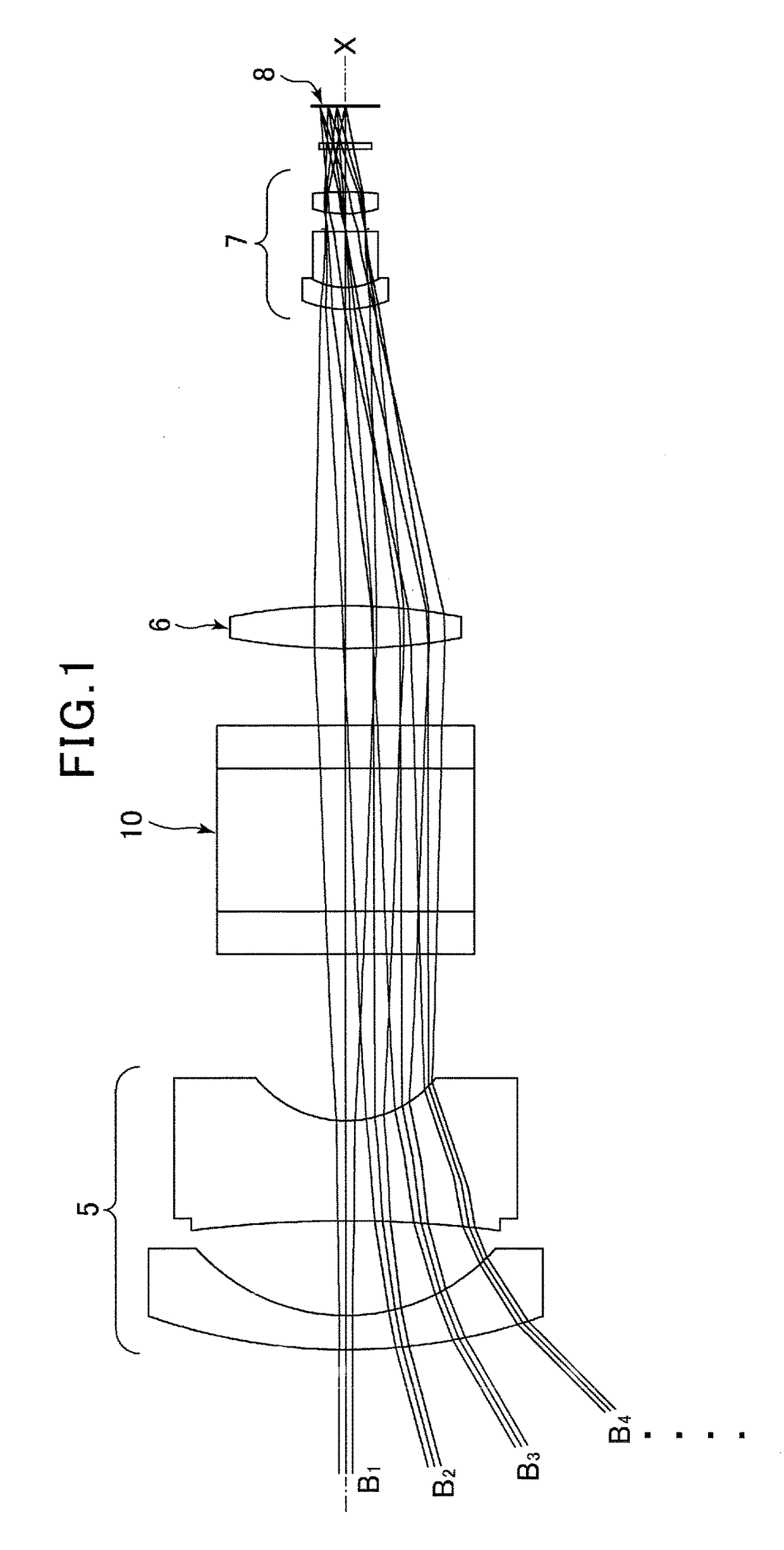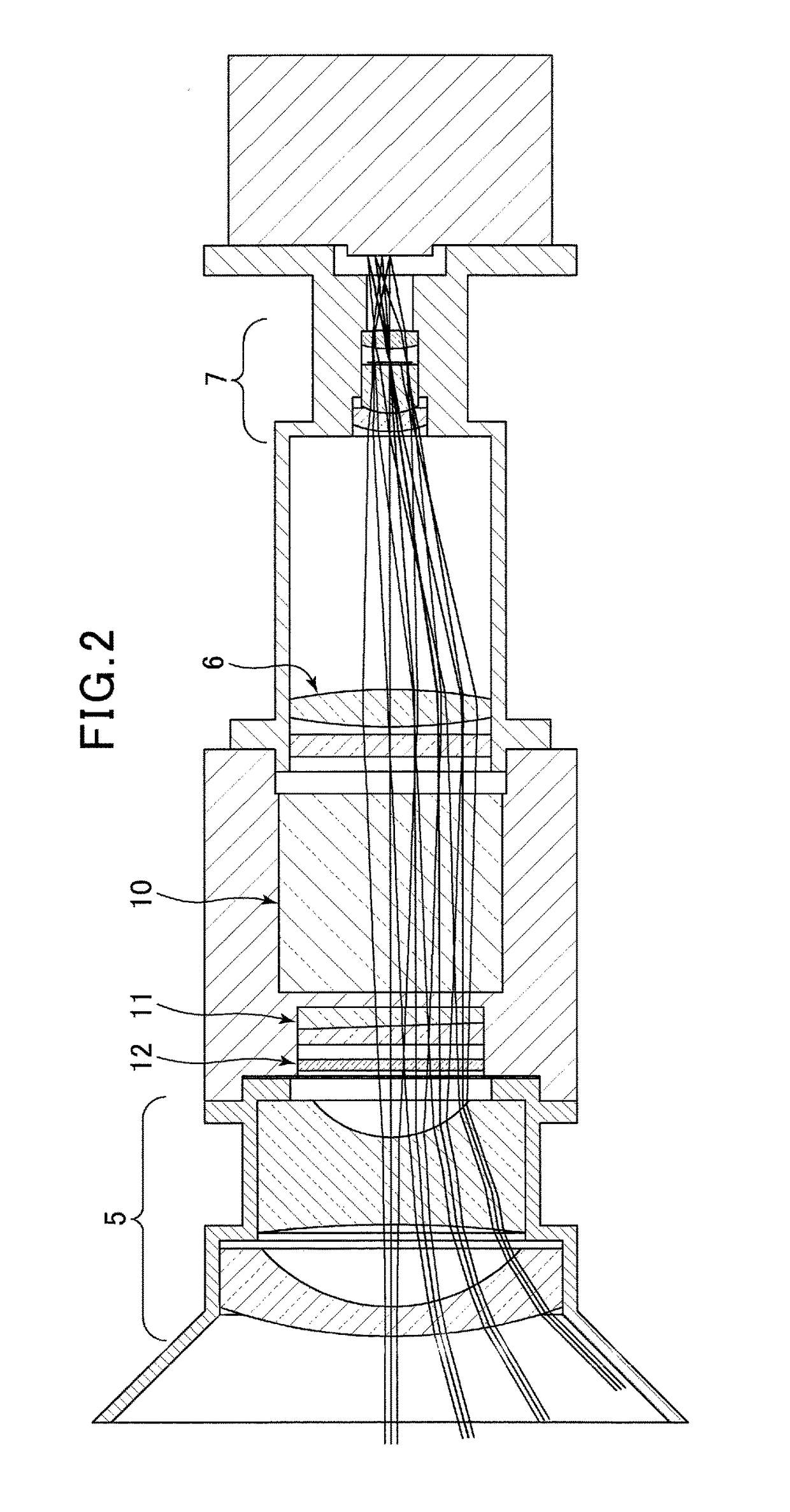Spectroscopic device
a spectroscopic device and spectroscopic technology, applied in the field of spectroscopic devices, can solve the problems of limited practicability, difficult to distinguish spectral properties, and large numerical apertures, and achieve the effects of maximizing the selectivity of wavelengths, improving performance, and spectral uniformity
- Summary
- Abstract
- Description
- Claims
- Application Information
AI Technical Summary
Benefits of technology
Problems solved by technology
Method used
Image
Examples
Embodiment Construction
[0032]The following is a description of an embodiment of the optical lens according to the present invention, with reference to the drawings. Note that a variable central wavelength filter disposed in the optical lens of the present invention is described as a liquid crystal tunable filter (hereinafter, referred to as an “LCTF”), but it is not limited, and can be installed any other types of variable central wavelength filter, such as a tunable Fabry-Perot interferometer.
[0033]To clarify the differences between the present invention and the conventional technology, a conventional spectroscopic device using an LCTF will be described first. As illustrated in FIG. 5, an LCTF 10 is configured from a plurality of units stacked to form a laminate-based configuration, and the each unit of the plurality of units comprises a liquid crystal cell 1, a birefringence filter 2, and a polarizing element (polarizing filter) 3. In other words, the LCTF 10 includes a multiple of stages configured fro...
PUM
| Property | Measurement | Unit |
|---|---|---|
| wavelengths | aaaaa | aaaaa |
| incident angle | aaaaa | aaaaa |
| wavelength band | aaaaa | aaaaa |
Abstract
Description
Claims
Application Information
 Login to View More
Login to View More - R&D
- Intellectual Property
- Life Sciences
- Materials
- Tech Scout
- Unparalleled Data Quality
- Higher Quality Content
- 60% Fewer Hallucinations
Browse by: Latest US Patents, China's latest patents, Technical Efficacy Thesaurus, Application Domain, Technology Topic, Popular Technical Reports.
© 2025 PatSnap. All rights reserved.Legal|Privacy policy|Modern Slavery Act Transparency Statement|Sitemap|About US| Contact US: help@patsnap.com



